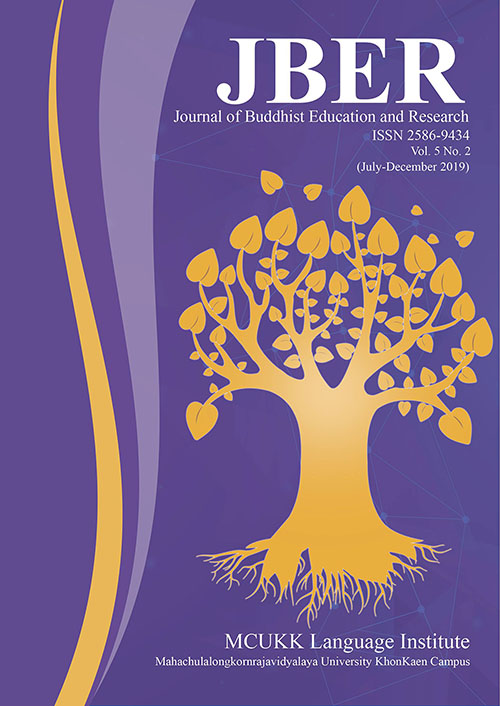PSYCHOLOGICAL AND SOCIAL ADAPTATIONS OF CHINESE STUDENTS IN ISLAMIC COUNTRY: A CASE STUDY OF CHINESE STUDENT IN UNIVERSITY OF PUTRA MALAYSIA
คำสำคัญ:
Cross-cultural adaptation, psychological and social adaptation, Chinese studentsบทคัดย่อ
The objective of this research is to study Chinese students’ crosscultural adaptations and analyze factors affected their adaptations in
Malaysia. The results from regression analysis results show that personality and Malay ability had no significant effect on psychological adaptation but English ability and attitude towards Islamic culture has a significant positive impact on psychological adaptation. On the other hand, experience in the Islamic world has a significant negative effect on psychological adaptation. In terms of social adaptation process, English ability and attitude towards Islamic culture have significant positive effect on social adaptation. Thus, this study recommended that Chinese oversea students should enhance their crosscultural ability to better adapt to social and culture of Malaysia by improve their English ability and adjust themselves to be positive attitude. Moreover, they should have sufficient preparation both in academic and financial aspects before they go to study aboard and during they are there.
เอกสารอ้างอิง
Berry, J. W. (2005). Acculturation: Living successfully in two cultures. International Journal of lute cultural Relations, 29, 697-712.
Benson PG. (1978). Measuring cross-cultural adjustment: The Problem of Criteria. International Journal of Intercultural Relation 2: 21-37.
Chao, M. M., Takeuchi, R., Farh, J. L, “Enhancing cultural intelligence: The roles of implicit culture beliefs and adjustment,” Personnel Psychology, Vol. 70, No. 1, pp. 257-292, 2017.
Chen, G. M. & Starosta, W. J. (1998). Foundations of iutercultural communication.
Church, A. (1982). Sojourner adjustment. Psychological Bulletin, 91, 540-572.
Dunn,J.W. (2006). Academic Adjustment of Chinese Graduate Students in United States Institution of Higher Education. ProQuest, UMI Dissertations Publishing.
Ellingsworth, H.W. (1988). A theory of adaptation in intercultural dyads. In Y.Y. Kim & W.B. Gudykunst (Eds.),
Gullahorn, J. T., & Gull ahorn, J. E. (1963). An extension of the U-curve hypothesis. Journal of Social Issues, 19, 33-47.
Hong, Q. (2014). New Silk Road: “One Belt and One Road”. Published in Confucius Institute Magazine, Number 34. Vol. 5, Readers Club Confucius, Sp
Kim, Y. Y. (2003). Adapting to an unfamiliar culture: an interdisciplinary overview. In W. B. Gudykunst (Ed.), Cross-cultural and intercultural communication. Thousand Oaks, CA: Sage, pp.243-257.
Kim, Y. Y. (2005). Adapting to a new culture: An integrative communication theory. In W. B. Gudykunst (Ed.), Theorizing about iutercultural communication (pp. 375-400). Thousand Oaks, CA: Sage.
Lysgaard, S. (1995). Adjustment in foreign society: Norwegian Full bright grantees visiting the United States. International Social Science Bulletin, 7, 45-51.
Oberg, K. (1960). Culture shock and the problems of adjustment to new cultural environments. Practical Anthropology, pp.170-179.
Ting-Toomey, S. (1999). Communicating across cultures. New York: The Guildford Press.
Ward, C., & Kennedy, A. (1993). Where’s the “culture” in cross-cultural transition? Comparative studies of sojourner adjustment. Journal of Cross-Cultural Psychology, 24(2), 221-249.
Ward, C. (1996). Acculturation. In D. Landis & R. S. Bhagat (Eds.), Handbook of intercultural training (pp. 124-147). Thousand Oaks, CA, US: Sage Publications, Inc.
Ward, C., Okura, Y., Kennedy, A., & Kojima, T.(1998). The U-curve on trial: A longitudinal study of psychological and sociocultural adjustment during cross-cultural transition. International Journal of Intercultural Relations, 22 , pp.277-291.
Wong, Erebus, Lau Kin Chi, Sit Tsui and Wen Tiejun. (2017). “One Belt, One Road: China's Strategy for a New Global Financial Order.” Monthly Review. Volume 68, Issue 8.
Zhang, Q. (2004). Self-efficacy and intercultural adaptation of Chinese students at U.S. Universities. International & Intercultural
Communication Annual, 27, 103-120.
Ministry of Higher Education Malaysia. (2014). International Students Statistics. (Online),http://www.mohe.gov.my/educationmsia/studentpass2008.php[Accessed 20th March 2015]. "The Future of the Global Muslim Population – Malaysia", Pew Forum. 2013. http://www.moe.gov.cn.





